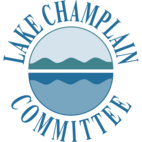Rain, Rain Go Away
October 2008
The summer of 2008 was remarkable for the amount of rain it brought to the Champlain Valley. Over twelve inches fell in the two months of June and July, nearly five inches more than normal (August was closer to normal). Not surprisingly, Lake Champlain’s water level was above average for much of the summer. The lake level peaked on August 15th at 98.78 feet above sea level, the highest August level ever seen during the 58-years for which data are available.
It makes sense that a peak in the lake level happens well after the most intense storms. After all, it takes time for water to reach the rivers and more time for it to get from the rivers to the lake itself. Yet, one would expect that rain applied directly to the surface of the lake would yield a commensurate increase of an inch in the lake level, but does it?
As an example let’s consider the rains in the Lake Champlain Basin associated with a storm on August 19th. An average of 0.8 inches of precipitation fell at 95 different weather stations throughout the region with a high of 2.34 inches in Ripton, Vermont according to the National Weather Service office in Burlington. The storm was widespread and surely a substantial amount of rain fell directly into Lake Champlain.
However, by the morning of August 20th, the lake level had fallen. First thing in the morning of August 19th the lake stood at 98.69 feet and by the next morning it had dropped to 98.5 feet. Even if the delivery of water from the watershed was delayed shouldn’t the rain directly added to the lake have increased its height?
Let’s consider four possible explanations for why the lake level did not rise. First, rain does not fall evenly around the basin. Even though the average was nearly an inch of rain some areas received almost nothing. Ellenburg Depot in northern New York reported the least rain, 0.01 inches. Still, this small addition can’t explain an actual decrease in lake level. Second, wind can physically push water so that it stacks on one side of the lake, perhaps masking any rise in level. However, it takes a fairly strong sustained wind to create a measurable difference in the lake level, so this explanation is not particularly strong. The third and fourth explanations are more likely to explain the discrepancy.
Third, data from only the day before and the day after the storm can miss an increase in lake level during the storm. Lake level measurements spaced less than twenty-four hours apart detect more subtle changes. In fact, the United States Geological Survey offers provisional data on lake levels at fifteen minute intervals which suggest that the level did in fact peak at 98.74 feet, 0.6 inches above the starting level for the day, but within an hour the level was back down to the starting point and it continued to fall into the next morning.
Fourth, and probably the best explanation, as the level of the lake increases so does the volume of water that flows over the Chambly Falls at the lake’s northern terminus. In discussing an earlier April storm where rain fell but lake level did not increase, Eric Smeltzer, a lake scientist for the state of Vermont, noted, “(flow) peaked at about 1,000 m3/sec. near the end of April. That works out to almost three inches per day, applied to the lake surface. If all the sum of inflows and direct precipitation was less than that, then the lake level would not rise.”
Though still a little high, the lake has returned to a more typical level since mid-August. As of September 24th, it was at 96.3 feet compared to an average level just under 96 feet for the end of September and beginning of October. Typically, this early autumn period is when the lake reaches its lowest point for the year. As trees begin to lose their leaves and other plants become dormant following the first frost, the amount of water taken up by vegetation decreases and a greater percentage of whatever falls as precipitation flows into the lake. This continues until snow starts falling. After that, precipitation begins to be locked up until spring thaw.
Though this past summers rains seem excessive, they may become more of the norm. Climate models predict that our part of the country will become wetter with global warming. Precipitation records for Burlington International Airport extend back to 1884. During that time, the rolling ten-year average rainfall has steadily increased, and we now get about five more inches of precipitation each year than we did at the end of the 19th century. It shouldn’t be a surprise if we continue to see more high lake level records broken in the years to come.
Lake Look is a monthly natural history column produced by the Lake Champlain Committee (LCC). Formed in 1963, LCC is the only bi-state organization solely dedicated to protecting Lake Champlain’s health and accessibility. LCC uses science-based advocacy, education, and collaborative action to protect and restore water quality, safeguard natural habitats, foster stewardship, and ensure recreational access.
Get involved by joining LCC using our website secure form (at www.lakechamplaincommittee.org), or mail your contribution (Lake Champlain Committee, 208 Flynn Avenue - BLDG 3 - STUDIO 3-F, Burlington, VT 05401), or contact us at (802) 658-1414, or lcc@lakechamplaincommittee.org for more information.
